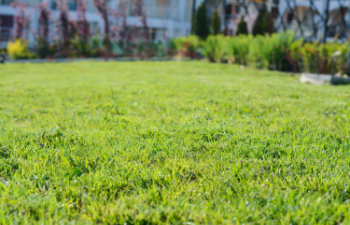
At Mobile Joe’s Landscaping in Alpharetta, we know that a lush, green lawn is the pride of any homeowner. However, maintaining that perfect lawn requires more than just regular mowing and watering. One of the most significant challenges to achieving a vibrant lawn is the threat of lawn diseases. Recognizing the early signs of lawn disease can help you take swift action to prevent widespread damage. Let’s explore the common early signs of lawn disease and offer some tips on how to manage and treat these issues effectively.
1. Discolored Patches
One of the first signs of a lawn disease is the appearance of discolored patches. These patches may vary in color, ranging from yellow to brown or even gray. The shape and size of these patches can also differ, but they typically stand out against the otherwise healthy green grass. Discoloration often indicates fungal infections, such as dollar spot or brown patch, which thrive in warm, humid conditions.
2. Thinning Grass
If you notice your lawn thinning in certain areas, it could be an early sign of a disease. Thinning grass can result from several issues, including poor soil quality, insufficient watering, or more commonly, a fungal infection. Diseases like red thread and snow mold can cause the grass to thin out, leaving your lawn looking sparse and unhealthy.
3. Leaf Spots
Leaf spots are another common indicator of lawn disease. These spots can be black, brown, or yellow and often have a distinctive ring or halo around them. Leaf spot diseases are caused by various fungi and can spread rapidly if not treated. Look for spots on individual grass blades and monitor their progression closely.
4. Powdery Mildew
Powdery mildew appears as a white or gray powdery substance on the grass blades. This fungal disease is more common in shaded areas with poor air circulation. While it may not kill your grass immediately, powdery mildew can weaken it over time, making it more susceptible to other diseases and pests.
5. Wilting Grass
Wilting grass, especially when it is not due to drought, can be a sign of root-related diseases. Fungal infections like Pythium root rot or take-all root rot attack the roots of the grass, preventing them from absorbing water and nutrients effectively. As a result, the grass may wilt and die off in patches.
6. Mushroom Growth
The presence of mushrooms in your lawn can indicate an underlying fungal problem. While mushrooms themselves are not harmful to your grass, they often signal decaying organic matter and the potential for fungal diseases. Addressing the root cause of mushroom growth can help prevent further lawn issues.
7. Unusual Growth Patterns
Pay attention to any unusual growth patterns in your lawn. This could include rings or arcs of greener grass, often referred to as “fairy rings.” These rings are caused by fungi and can disrupt the uniformity of your lawn. Other patterns to watch for include streaks or bands of different-colored grass.
8. Presence of Pests
Certain lawn pests, such as grubs or chinch bugs, can damage your grass and create an environment conducive to disease. If you notice an increase in pest activity, it may be a precursor to a lawn disease outbreak. Regular pest control measures can help mitigate this risk.
How to Act on Early Signs of Lawn Disease
Recognizing the early signs of lawn disease is crucial, but taking prompt action is equally important. Here are some steps you can take to manage and treat lawn diseases effectively:
- Identify the Disease: Proper identification of the disease is essential for effective treatment. Consult with a lawn care professional or send a sample to a local extension service for accurate diagnosis.
- Improve Lawn Care Practices: Ensure your lawn is receiving proper care, including appropriate watering, mowing, and fertilization. Avoid overwatering and mow at the correct height to reduce stress on the grass.
- Apply Fungicides: For fungal diseases, applying fungicides can help control the spread. Follow the manufacturer’s instructions and consider alternating between different fungicides to prevent resistance.
- Enhance Soil Health: Healthy soil promotes strong grass growth and resistance to diseases. Aerate your lawn regularly, add organic matter, and test your soil to adjust pH levels if necessary.
- Reduce Shade and Improve Air Circulation: Trim back overhanging branches and remove debris to improve sunlight penetration and air circulation. This can help reduce the humidity that fosters fungal growth.
- Regular Monitoring: Keep a close eye on your lawn and inspect it regularly for any changes or signs of disease. Early detection allows for quicker intervention and better outcomes.
Call Our Lawn Disease Experts for Help!
A beautiful lawn requires vigilance and proactive care. By recognizing the early signs of lawn disease and taking appropriate action, you can maintain a healthy and vibrant lawn year-round. Remember, when in doubt, all our lawn professionals at Mobile Joe’s Landscaping in Alpharetta to ensure your lawn receives the best possible care.
Posted on behalf of
12460 Crabapple Rd. Suite 202 - 407
Alpharetta, GA 30004
Phone: (770) 360-5604
Email: infomobilejoes@gmail.com
Mon. - Fri. 8:30 AM – 7:00 PM
